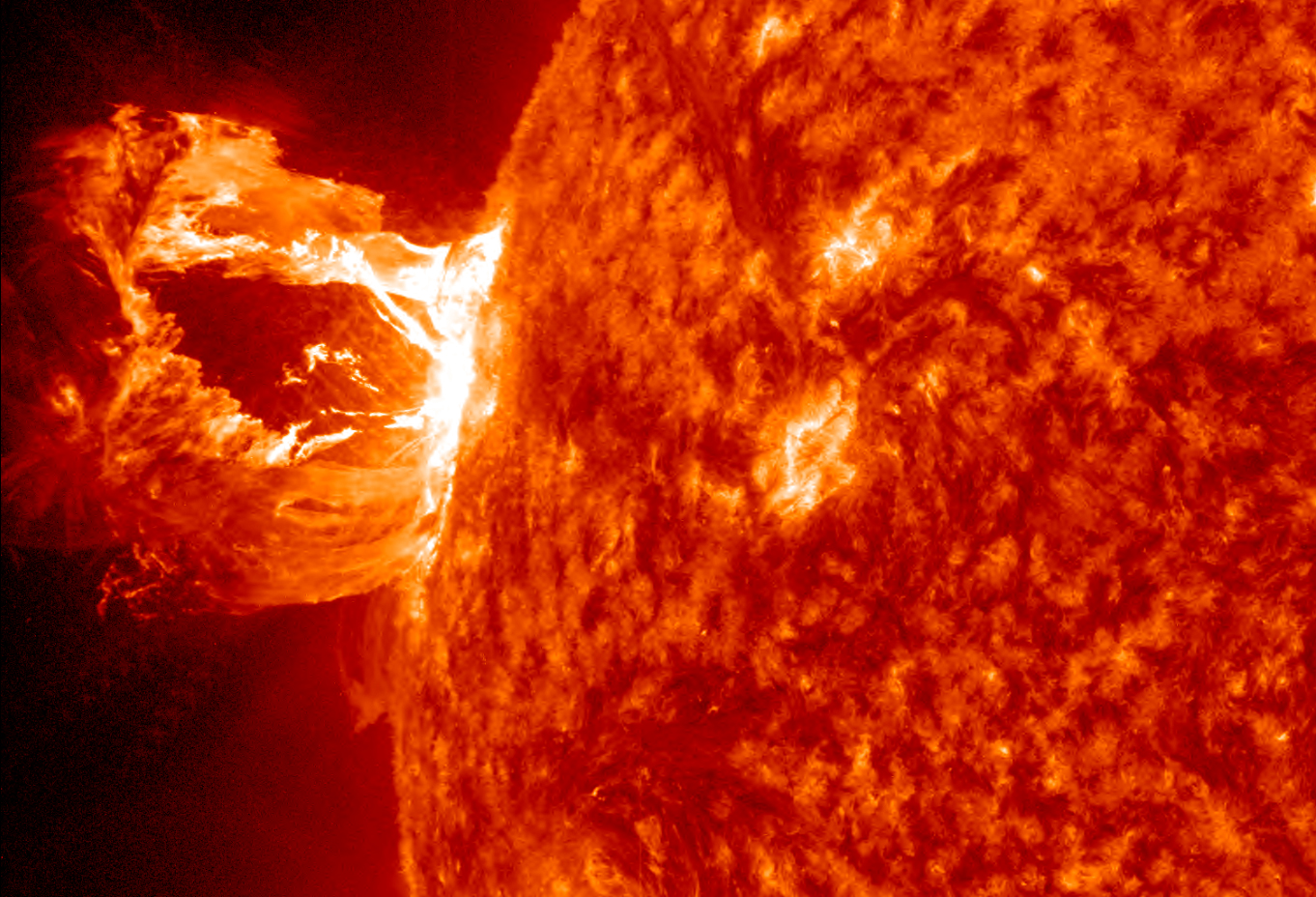New Tool Provides Localized Solar Weather Forecasts

A new tool will help improve forecasts of extreme space weather that can wreak havoc on satellites and cause lengthy power outages here on Earth.
While the sun provides the warmth and light that makes Earth habitable, it also ejects violent flares of hot material that hurls through space. Charged particles from these powerful flares, or solar storms, can enter Earth's neighborhood and cause damage to satellites in orbit and, in some cases, reach through the planet's atmosphere and create surges in transformers on the ground.
Currently, scientists can watch for the appearance of solar flares and anticipate their arrival time at Earth. However, the new geospace forecast tool, developed by researchers at the University of Michigan and Rice University, will provide more precise forecasts of the locations on Earth where the solar storm will hit the hardest, according to a statement from the University of Michigan. [The Biggest Solar Storms of All Time]
The new geospace tool will provide unique regional data for 350-square-mile (900 square kilometers) plots of Earth's surface, as well as forecasts up to 45 minutes before a solar storm hits the planet, the statement said. The National Oceanic and Atmospheric Administration's (NOAA) Space Weather Prediction Center will begin using this new tool Oct. 1, 2016.
"This is the first time that utility companies will have a regional forecast of space weather effects with any lead time," Dan Welling, assistant research scientist in the University of Michigan Department of Climate and Space Sciences and Engineering and one of the model's developers, said in the statement. "Compared to atmospheric weather forecasting, this sounds like a trivial step, but in terms of space weather, it's a giant leap."
On Sept. 2, 1859, a catastrophic solar storm bombarded Earth's atmosphere and damaged telegraph wires on the ground. Scientists say that if a similar event were to occur today, it would be much worse.
Electrical transformers, for example, provide power across the globe. If a transformer were damaged by a solar storm, it could result in a months-long power outage. This could have cascading effects in societies "that depend on electricity for essentials like food, heat, water and communication," officials said in the statement.
Get the Space.com Newsletter
Breaking space news, the latest updates on rocket launches, skywatching events and more!
To provide the most realistic space weather predictions, the geospace forecast tool combines models of Earth's atmosphere, electric and magnetic fields, the magnetosphere (the magnetic field surrounding Earth) and a region of hot particles surrounding the planet, also known as the ring current.
"This is the first high-performance physics-based geospace model that can run faster than real time," Tamas Gombosi, the Konstantin I. Gringauz distinguished university professor of space science and the Rollin M. Gerstacker professor of engineering at the University of Michigan, said in the statement.
The new forecast model will have important implications, as scientists predict Earth could be hit with a violent solar storm in the next decade.
"The largest storms occur after solar maximum, so we are in the most dangerous period right now," Gombosi added, referring to the declining phase of the sun's 22-year activity cycle.
Follow Samantha Mathewson @Sam_Ashley13. Follow us @Spacedotcom,Facebook and Google+. Original article on Space.com.
Join our Space Forums to keep talking space on the latest missions, night sky and more! And if you have a news tip, correction or comment, let us know at: community@space.com.

Samantha Mathewson joined Space.com as an intern in the summer of 2016. She received a B.A. in Journalism and Environmental Science at the University of New Haven, in Connecticut. Previously, her work has been published in Nature World News. When not writing or reading about science, Samantha enjoys traveling to new places and taking photos! You can follow her on Twitter @Sam_Ashley13.









